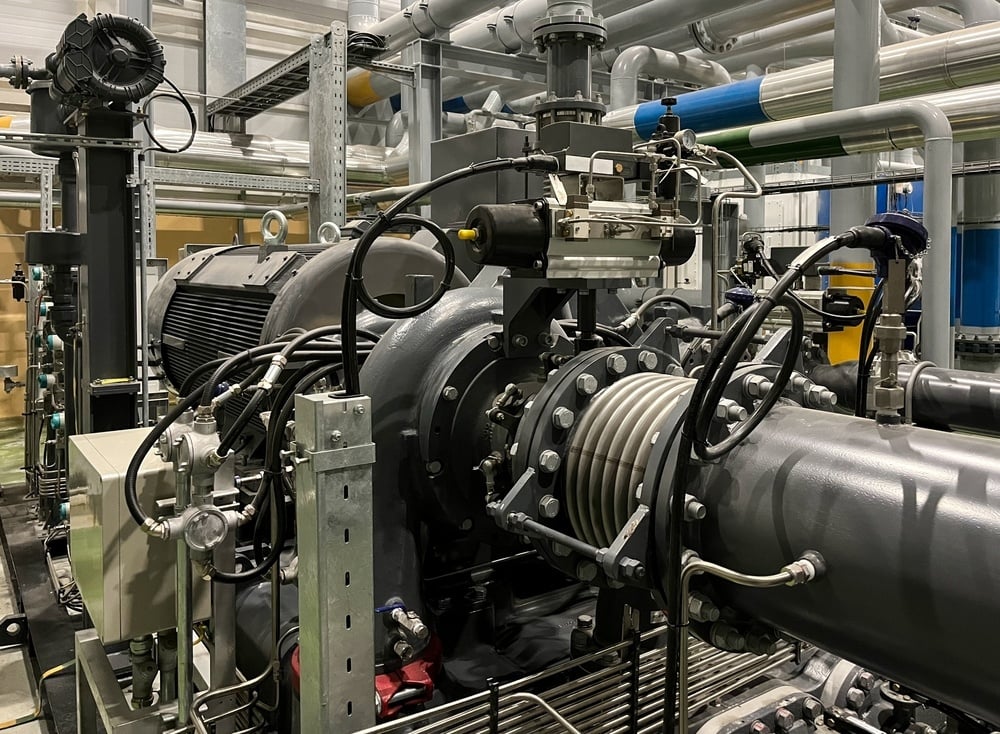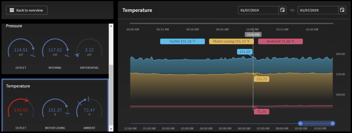How Does a Nitrogen Generator Work with Your Compressor?

Nitrogen is a crucial component for many industries—from food and beverage preservation to chemical production and electronics manufacturing. Traditionally, businesses have relied on bulk nitrogen deliveries, but an increasing number of facilities are turning to on-site nitrogen generators for cost-efficiency, sustainability, and convenience. But exactly how does a nitrogen generator work with your air compressor to achieve the intended results? Our experts explain.
What is a Nitrogen Generator?
A nitrogen generator is a machine that extracts nitrogen from the ambient air. By separating nitrogen molecules from oxygen and other components, the nitrogen generator produces highly-pure nitrogen gas suitable for your industrial and manufacturing processes.
But answering the question “How does a nitrogen generator work?” isn’t quite so simple. The response depends on the type of system. There are three primary types of nitrogen generators: membrane, cabinet-style, and pressure swing adsorption (PSA) nitrogen generators.
- Membrane Nitrogen Generators: These use semi-permeable membrane fibers to separate nitrogen from compressed air. Oxygen, water vapor, and other gasses pass through the membrane, leaving behind a stream of nitrogen gas. Membrane systems are typically used for applications that require nitrogen purity levels between 90% and 99%.
- Cabinet-style Nitrogen Generator: These are compact and self-contained nitrogen generation systems that are enclosed within cabinets. These generators are space-efficient and typically used in smaller or more confined industrial settings where floor space is limited. They provide a streamlined solution for producing nitrogen on-site without requiring a large, complex setup.
- Pressure Swing Adsorption (PSA) Nitrogen Generators: These systems rely on a molecular sieve material, usually carbon-based, to adsorb oxygen from compressed air while allowing nitrogen to pass through. PSA generators can achieve nitrogen purity levels of up to 99.99%, making them ideal for more demanding industrial applications, such as electronics manufacturing or food processing.
Both systems rely on compressed air as their source, which brings us to the next critical component: your air compressor.
How Does a Nitrogen Generator Work with Your Facility's Air Compressor?
Your facility's compressed air system plays an essential role in nitrogen generation. The nitrogen generator needs a constant supply of clean, dry, and pressurized air to produce nitrogen gas efficiently. This is where your air compressor comes in.
Here are more details about how the process works:
- Compressed Air Supply: The air compressor draws in ambient air, compresses it, and delivers it to the nitrogen generator. The quality of the compressed air is crucial because contaminants like moisture, oil, and particulate matter can affect the nitrogen generator's performance and lifespan. That’s why compressed air is typically filtered and dried before entering the generator.
- Air Separation Process: Once compressed air reaches the nitrogen generator, the separation process begins. In membrane systems, the compressed air flows through membrane fibers, separating nitrogen from oxygen and other gasses. In PSA systems, compressed air passes through adsorption towers where oxygen is adsorbed, leaving nitrogen gas.
- Nitrogen Storage and Delivery: Once the nitrogen is separated, it can either be used immediately in your facility or stored in high-pressure tanks to use later. The nitrogen can be delivered to various production areas through a network of pipes, providing a constant supply of nitrogen for your operations.
Main Benefits of an On-site Nitrogen Generator
Installing an on-site nitrogen generator offers several advantages over purchasing bulk nitrogen deliveries. Let’s explore some of the top benefits.
Cost Savings
One of the most significant advantages is the reduction in costs. By producing nitrogen on site, your facility can eliminate the need for nitrogen deliveries, which often involve rental fees for cylinders or tanks, as well as transportation costs. Over time, these savings will surpass your initial investment in the nitrogen generator—often in as little as two years.
Improved Efficiency
On-site nitrogen generation allows you to produce nitrogen as needed, eliminating the risk of running out of nitrogen during critical production processes. This can lead to fewer production delays and more consistent operations.
Sustainability
Generating nitrogen on-site reduces the environmental impact associated with transporting bulk nitrogen. Fewer trucks on the road mean lower CO2 emissions, contributing to your facility’s sustainability goals.
Quality Control
With an on-site generator, you can control the purity of the nitrogen being produced, ensuring that it meets the specific requirements needed for your applications. This can be particularly beneficial for industries like food processing, pharmaceuticals, and electronics, where purity levels are critical.
Flexibility
Whether your nitrogen needs fluctuate or grow over time, an on-site generator allows you to adjust production as needed. This flexibility makes it easier to scale your nitrogen supply in response to changing production demands.
How to Select a Supplier for Your On-site Nitrogen Generator
Choosing the right supplier for your nitrogen generator will impact your facility’s performance, efficiency, and bottom line. Here are some key factors to consider.
- Expertise: Look for a supplier with a proven track record in the industry. An experienced supplier will be able to assess your facility’s needs and recommend the most suitable nitrogen generation system.
- Range of Products: A good supplier should offer a variety of nitrogen generator options, from membrane systems to PSA systems. This ensures you can select the system that best fits your specific applications and production requirements.
- Support Services: The supplier should be able to provide ongoing technical support. This includes installation, maintenance, and troubleshooting services to ensure that your system operates efficiently over its lifespan.
- Energy Efficiency: Nitrogen generation systems can vary significantly in terms of energy consumption. Be sure to choose a supplier that offers energy-efficient solutions, helping you lower your overall operating costs.
- Transparent Costs: Consider the total cost of ownership. Initially, this includes the cost of purchasing the nitrogen generator—plus an air compressor if you don’t already have one. Additionally, this can include installation, maintenance, and energy usage costs. A reputable supplier will provide a clear breakdown of these costs and help you understand the return on investment of your nitrogen generator system.
Experience the ROI of an On-site Nitrogen Generator
How does a nitrogen generator work with your specific facility, application, industry, and air compressor? The experts at TMI Compressed Air can answer these questions and help you make the switch to on-site nitrogen generation. We offer a wide range of nitrogen generator systems designed to meet the needs of facilities in manufacturing, food processing, pharmaceuticals, and more. We’ll assess your facility’s requirements, recommend the best system, and provide professional installation and ongoing support. Get in touch with our team.


